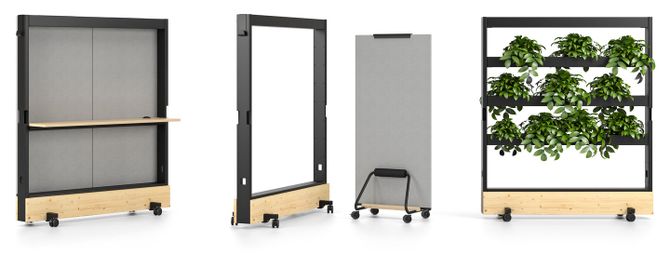
Dancing Wall
Stephan Hürlemann, 2018
Information
- Origin of wood: oak (Quercus robur) from Italy; European spruce (Picea abies) from Italy.
Dancing Wall
Many companies adapt to the increasingly unpredictable changes in their markets by creating agile organisational structures. To facilitate this, they require office furnishings that can be easily reconfigured – if possible by the users themselves. Dancing Wall is a solution for these new work environments. The basic function of Dancing Wall is that of a mobile partition that can be used to flexibly divide offices into zones, while providing vertical and horizontal work space. Diverse combinations of different Dancing Walls can create varied office layouts and work situations, and be spontaneously adapted to changes in team size or room function – without renovations, without a fitter. Thanks to this modularity, Dancing Wall is perfectly in tune with the changing requirements of the modern working world. Dancing Wall consists of a metal frame that can be equipped in various configurations: as a bookshelf, TV unit, coat rack, plant wall, or as a room divider with removable magnetic whiteboards and pinboards. The design also allows for the integration of power cables and functional accessories, such as containers, hooks and covers, which can be custom specified to suit the company's needs. Clad with solid wood panels, the base of the Dancing Wall carries sufficient weight to be extremely stable despite the short length of the lateral castor extensions, while remaining easy to move around. To facilitate the storage and transport of whiteboards and pinboards, an optional trolley is also available.
Stephan Hürlemann
Stephan Hürlemann is a Swiss architect and designer with an independent studio in Zurich. He designs and develops interiors, furniture, products and installations for international clients. He has worked together with Vitra since 2017.